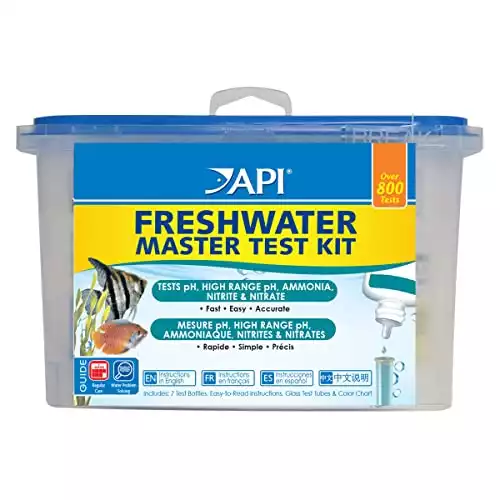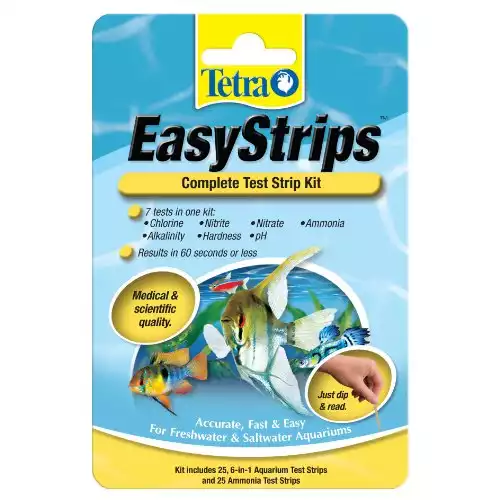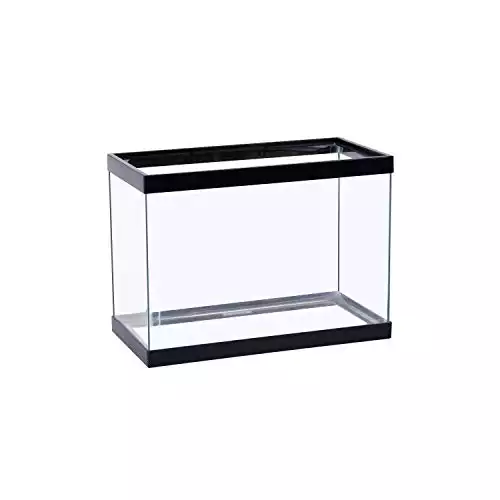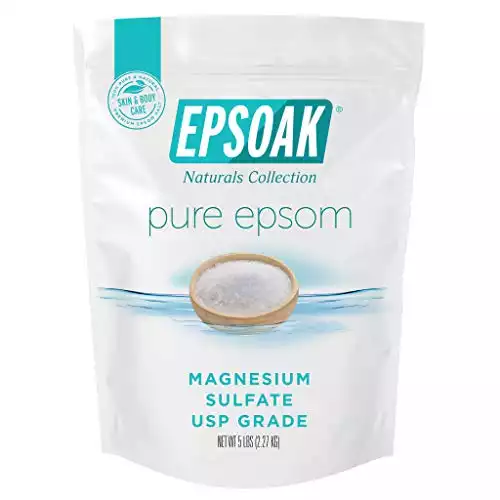
Based on what I have learned over the years, I’ve put together all the information you need to help you diagnose and treat your pet fish.
I’ve successfully treated swim bladder disease in the past and done a step-by-step treatment plan below, so your fishy pal can get back to full health.
What Is a Swim Bladder?

A swim bladder is a balloon like organ that boney fish use to control their buoyancy. It enables them to navigate up and down the water column and remain balanced and stable. They can inflate their swim bladder to go to the water’s surface or deflate their swim bladder if they want to go deeper.
Fish come under 2 categories:
1: Physostomous fish
Fish like Goldfish, Catfish, and Koi have a pneumatic duct that connects their throat to their swim bladder. These fish can fill or empty their swim bladders by gulping or expelling air at the water’s surface. They can also empty their swim bladder beneath the water by “burping” the air out.
2: Physoclistous fish
Fish such as cichlids have a complex network of blood vessels called the vascular rete. These fish can pull gases from their blood and into their swim bladder.
There is of course the odd ‘exception to the rule’ such as the Longnose Hawkfish, for example, that doesn’t have a swim bladder.
What Is Swim Bladder Disease?
Swim bladder disease is not actually a disease, it’s a disorder where your fish’s swim bladder does not function as it should.
Although the condition is most common in Fancy Goldfish and Betta Fish, any breed of fish that has a swim bladder can get swim bladder disorder.
Is Swim Bladder Disease Contagious?
Well…it depends, SBD itself isn’t contagious, but the underlying condition that is causing it could be.
If it’s caused by diet, water quality, or trauma, then no it’s not contagious.
If your fish has an internal parasite or bacterial infection, then yes it could be contagious and it’s advisable to put the affected fish into a quarantine tank as soon as possible to avoid it spreading.
Symptoms of Swim Bladder Disease
There are many symptoms of swim bladder disorder and it can be difficult to diagnose. Keep a close eye on your fish and watch for them showing any of the following symptoms.
1. Positive Buoyancy Disorder

You will find your fish appears to be stuck at the water’s surface, unable to get back underwater properly. When the fish floats on the surface and part of their skin is exposed to the air, damage will occur to their protective mucus barrier, which will eventually lead to ulcerations and infection of the exposed skin.
2. Negative Buoyancy Disorder

Your fish will appear to be stuck at the bottom of your tank, struggling to get to the water’s surface. Again, this can cause ulcerations and infections to their skin if it is rubbed against the sand or substrate.
You can help avoid infection by replacing your substrate with smooth glass beads.
Other signs include:
- A swollen belly
- Being unable to swim upright
- Appearing unbalanced
- Floating upside down
- Trying hard to swim but not moving
Causes of Swim Bladder Disease
The No.1 cause of swim bladder disorder is poor water quality.
Another major cause is if your fish eats greedily at the surface it can gulp in a lot of excess air with its food. This air can go into their swim bladder causing it to overinflate, leaving your fish floating at the top of their tank. This is typical for Fancy Goldfish but should correct itself within a couple of hours.
Other causes include:
- Bacterial or parasitic infection due to poor aquarium water quality
- Compression from tumors, cysts on the kidneys, or fatty deposits on the liver
- Constipation
- Defect at birth
- Deformation of the spine
- Egg binding if your fish is female
- Overfeeding
- Physical injury trauma. Is your fish being bullied by one of their tankmates or maybe tried their best Harry Houdini impression by jumping out of the tank and landing on the floor?
- Stress due to poor water quality
- Water temperature is too low. This can slow the digestive process which makes the stomach expand and compress the swim bladder
How to Prevent Swim Bladder Disease
Since following these 2 basic steps I’ve had a huge reduction in swim bladder disorders with my own fish.
1: Water Parameters
It goes without saying to make sure the pH, ammonia, nitrite, and nitrate are at the correct levels by using a reliable water test kit or strips.
My no.1 go-to testing kit is the API Freshwater Master Test Kit, it’s the most accurate and reliable kit around.
The API freshwater test kit offers outstanding value (over 800 tests!) and is very accurate, if you're serious about fishkeeping this is the best test kit to buy and the only one I use.
- Includes 7 bottles of testing solutions, 1 color card, and 4 tubes with caps.
- Performs over 800 tests.
- Accurately monitors the 5 most vital water parameter levels in freshwater aquariums: pH, high range pH, ammonia, nitrite, and nitrate.
- Helps monitor water quality and prevent invisible water problems that can be harmful to fish and cause fish loss.
- More time consuming than test strips
The Tetra test strips are quick & easy to use and measure all the vital water parameters that you need to monitor to keep your fish safe, but it can be difficult to read the colors, making them less accurate than the API water test kit.
- Quick and easy - 60 seconds and you have your results
- Measures ammonia (separate test strip), nitrates, nitrites, water hardness, chlorine, alkalinity, and pH levels
- Can be used in both freshwater and saltwater aquariums
- Not as accurate as API water test kit
- Colors difficult to read
Keeping the water at the correct temperature helps to aid the digestion process and avoid constipation. Nobody enjoys that bunged-up feeling!!
Make sure your filter is working and you have enough surface agitation which allows for harmful gases to escape and keeps your water oxygenated.
2: Diet
Feed your fish high quality food that sinks in the water. This prevents your fish from gulping in excess air at the surface and overinflating their swim bladder.
Soak their food in water before adding it to the tank. This will allow the food to expand before your fish eats it, rather than it expanding in their stomach and causing constipation.
Don’t overfeed your fish. If your fish eats too much food, their stomach may swell and compress the swim bladder. Any leftover food that isn’t eaten or removed will eventually rot and cause your water parameters to spike.
I’ve done some homemade sinking food recipes, that your fish will gobble up!
Treatment For Swim Bladder Disease

It’s always advisable to consult your local vet, who can identify the root cause of the problem so that the correct treatment can be applied.
I have left links at the end of this post for how you can find a specialist aquatic vet in your area.
There are various home treatments you can try for swim bladder disorder, but it can take a bit of detective work to figure out what is causing the problem in the first place.
First up, I’m sure you’ve guessed, check your water parameters are good as mentioned above in the prevention section.
Hospital / Quarantine Tank
If you have a community tank, moving the affected fish to a quarantine/hospital tank may be best. This allows you to monitor and treat the fish separately and gives your fish a bit of time to rest and recuperate, we all need a little R & R occasionally!
The Tetra 5 1/2 gallon tank is a great hospital/quarantine tank for smaller fish. I always use a smaller tank for medicating fish, as medication can be expensive and if you have a larger tank containing more water you’ll need to use more medication.
The Tetra 5.5 gallon aquarium is a great no-frills tank that makes an excellent quarantine/hospital tank for treating sick fish.
- High quality
- Compatible Tetra accessories available (filtration, heating, lighting etc).
- Well packaged
- Available in 3 other sizes
- Silicone could be neater
- No accessories included
Fasting
You could try fasting your fish for 2-3 days. Doing so will help excess gas work its way out of the fish’s digestive system.
Frozen Peas
You’ll see many people online suggesting this as a miracle cure for swim bladder disease. The theory is that the peas act as a mild laxative and get your fish ‘moving’ again and this helps to get rid of the excess air trapped inside your fish.
But here’s the thing, because the peas sink in the water, you are feeding your fish a ‘sinking diet’ which stops them from taking in excess air at the water’s surface when they eat food that floats.
So although it appears peas are a miracle cure, it’s more than likely the fact that your fish isn’t gulping down excess air that’s helping the most.
If you do try the pea method please bear in mind it’s only a short-term solution that should only be used for 2-3 days and 1 or 2 peas per day should be enough.
Make sure you warm the peas first, then remove the outer shell (as fish can’t digest it), and mush the peas up a bit so they are in smaller chunks making them easier to eat. You may need to hold the peas in front of your fish’s mouth if they’re having difficulty moving about.
Infections
If it’s a parasitic or bacterial infection, there are products available to add to the water.
Bacterial infections can be treated with antibiotics.
Parasitic infections can be treated with an anti-parasitic agent.
Epsom Salts
Unscented Epsom salts are an effective natural treatment for swim bladder disease, dropsy & popeye.
They act as a relaxant and mild laxative, helping to get your fish back to full health.
- Pure unscented USP grade Magnesium Sulfate
- Dissolves easily
- GMO free
- Certified cruelty free
- Made in USA
- Bag can be difficult to re-seal
Despite the name, Epsom Salts aren’t salt, it’s actually magnesium sulfate. Giving your fish an Epsom Salt bath acts as a muscle relaxant, laxative and reduces swelling.
Make sure when you buy Epsom Salts that you check the ingredients list and that it is 100% Epsom Salt (magnesium sulfate) and there are no added fragrances etc as these can harm your fish.
I have successfully used Epsom Salt baths to treat SBD in the past. I will share with you the method and quantities I used, but please bear in mind I am not a qualified vet, so it’s always advisable to contact a qualified vet before trying home treatments.
- Transfer water from your fish tank into a separate treatment tank or container.
- Make sure the temperature is the same in your treatment tank and fish tank so that it doesn’t cause shock/stress to your fish.
- Add 1 level tablespoon (15 grams approx) of Epsom Salts per 1 US gallon of water.
- Dissolve the Epsom Salts fully in the treatment tank water.
- Add your fish to the treatment tank for 15 minutes (use a timer!). Keep an eye on your fish as they can get a little stressed out at first and try to jump out of the treatment tank.
- Remove the fish from the treatment tank and add it back into your fish tank.
- Monitor your fish to see if there are any improvements.
- Repeat steps 1-6, once per day until you see an improvement.
If you don’t see any improvement within a few days contact a veterinarian as there may be a serious underlying problem that needs specialist treatment.
Negative Buoyancy Disorder
For some fish with negative buoyancy disorder, it may be that this is just how they’ll be all of their life. However, they can still live a full and happy life with a couple of small tweaks to their tank.
You should either completely remove the substrate or replace it with smooth glass stones. This will prevent your fish from picking up infections from rubbing against a rough surface.
If you have any decorations, these should also have a smooth surface.
Please don’t attempt to attach a fish floatation device yourself (even if you’ve watched a YouTube video 10 times and think you’re an expert!), as it can easily damage the fish’s protective mucus layer, causing ulcerations and infection. This procedure should only be done by a qualified vet.
Positive Buoyancy Disorder
As mentioned above, feeding your fish a high-quality ‘sinking diet’ can be an effective positive buoyancy disorder treatment.
If this doesn’t correct the issue, contact your local fish vet who may be able to operate to remove the excess air from your fish’s swim bladder.
Find a Fish Vet Near Me
If you would like to seek veterinary advice you can find a specialist aquatic vet in your area using the links below:
Now you know all about swim bladder disease, I hope I’ve put your mind at ease and you can go about getting your fish back to full health.
Check out the Aquarium Health section for more guides just like this one.




